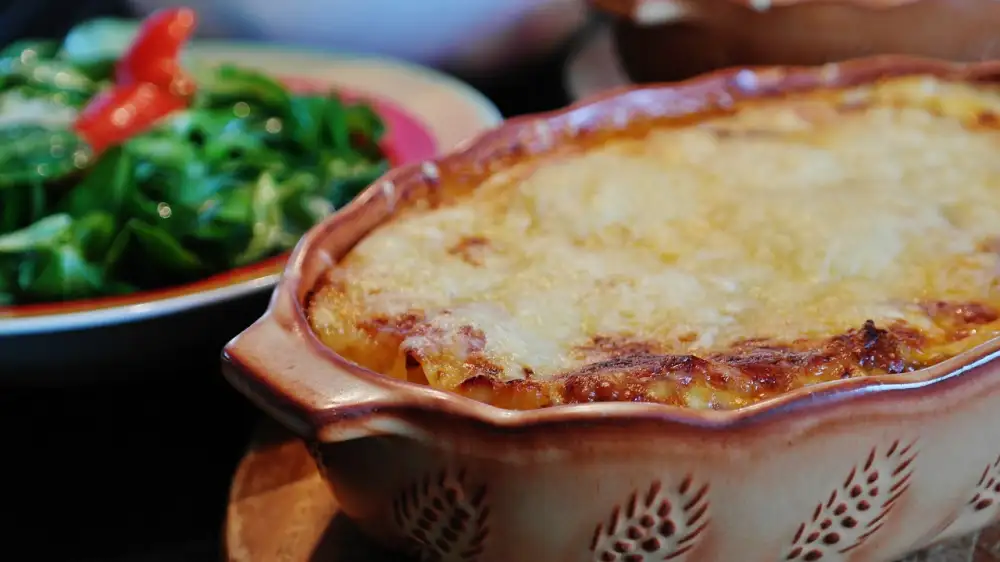Perfectly Baked Lasagna: Expert Tips and Cooking Time Guidelines for Delicious Results

Baking lasagna is a culinary art that combines layers of pasta, rich sauce, and delectable cheese into a mouthwatering dish. Whether you are a seasoned chef or a novice in the kitchen, mastering the art of baking lasagna can bring immense joy and satisfaction. The process involves carefully layering ingredients and then allowing them to meld together in the oven, creating a harmonious blend of flavors. In this article, we will explore expert tips and cooking time guidelines to help you achieve perfectly baked lasagna every time. So let's dive in and discover the secrets to creating a delicious masterpiece!
Preparing the lasagna for baking
Preparing the lasagna for baking is an important step in ensuring delicious results. Start by preheating your oven to the recommended temperature, usually around 375°F (190°C). While the oven is heating up, prepare your lasagna noodles according to package instructions. Be sure to cook them until they are al dente, as they will continue to cook in the oven. Drain the cooked noodles and rinse them with cold water to prevent sticking. Next, prepare your desired filling by combining ingredients such as ground meat, cheese, vegetables, and sauce in a bowl. Layer the lasagna noodles in a greased baking dish, alternating with the filling mixture. Repeat this layering process until all ingredients are used, ending with a layer of sauce and cheese on top. Cover the dish tightly with aluminum foil to trap steam and prevent drying out during baking.
Determining the cooking time for lasagna
Determining the cooking time for lasagna is crucial to achieving a perfectly baked dish. While there are general guidelines, it's important to consider various factors that can affect the baking time. The thickness of the lasagna layers, the type and amount of ingredients used, and even the size and shape of the baking dish all play a role in determining how long it will take for your lasagna to cook through. It's always best to rely on a combination of recipe instructions and visual cues to determine when your lasagna is done.
Factors that affect the baking time
Factors that affect the baking time of lasagna include the thickness of the layers, the type and amount of ingredients used, and the temperature of the oven. Thicker layers will require more time to cook through, while thinner layers will cook faster. The type and amount of ingredients can also impact cooking time, as ingredients with higher moisture content may take longer to cook. Additionally, ovens can vary in temperature accuracy, so it's important to monitor the lasagna closely to ensure it doesn't overcook or undercook.
Recommended baking time for different types of lasagna
Recommended baking time for different types of lasagna may vary depending on the ingredients used and the thickness of the layers. As a general guideline, traditional meat lasagna typically requires about 45-60 minutes in a preheated oven at 375°F (190°C). Vegetarian or seafood lasagna may require slightly less time, around 35-45 minutes. For gluten-free or dairy-free versions, it is recommended to reduce the cooking time by 5-10 minutes. However, always refer to the specific recipe instructions for accurate baking times.
Checking for doneness
Checking for doneness is a crucial step in baking lasagna to ensure it is perfectly cooked. To determine if the lasagna is done, insert a knife or toothpick into the center of the dish. If it comes out clean, with no resistance or uncooked pasta, then your lasagna is ready. Additionally, the top layer should be golden brown and bubbling around the edges. Remember to let it rest for a few minutes before serving to allow the flavors to meld together.
Tips for achieving perfectly baked lasagna
1. Use a deep baking dish: A deep dish allows the layers of pasta, sauce, and cheese to cook evenly without overflowing.
2. Cook the noodles al dente: Undercooking the noodles slightly will prevent them from becoming mushy during baking.
3. Layer properly: Start with a thin layer of sauce on the bottom, followed by noodles, cheese, and any other fillings. Repeat until all ingredients are used, ending with a layer of cheese on top.
4. Cover with foil: Tenting the lasagna with foil during the first half of baking helps to trap steam and ensures even cooking throughout.
5. Let it rest before serving: Allow the lasagna to cool for at least 10 minutes after removing it from the oven. This allows the flavors to meld together and makes it easier to cut into neat slices.
6. Garnish and serve: Top your perfectly baked lasagna with fresh herbs like basil or parsley for added flavor and visual appeal. Serve alongside a crisp salad or garlic bread for a complete meal.
By following these tips, you'll be able to achieve a beautifully baked lasagna that is bursting with flavor and sure to impress your family and friends!
In conclusion, baking lasagna is a delightful culinary adventure that can result in a mouthwatering dish. By following the expert tips and cooking time guidelines provided, you can achieve perfectly baked lasagna every time.
Remember to prepare your lasagna properly by layering the ingredients and choosing high-quality noodles and sauce. Take into consideration the factors that affect baking time, such as the size of the dish and the temperature of your oven.
The recommended baking times for different types of lasagna will give you a starting point, but it's essential to check for doneness by inserting a knife into the center. If it comes out hot and bubbling, your lasagna is ready to be enjoyed.
To ensure perfectly baked lasagna, consider using a foil tent or covering with parchment paper to prevent excessive browning. And don't forget to let it rest for a few minutes before serving, allowing all the flavors to meld together.
So go ahead and embrace the joy of baking lasagna. With these expert tips and cooking time guidelines in mind, you'll be able to create a delicious masterpiece that will have everyone coming back for seconds. Happy cooking!
Published: 28. 11. 2023
Category: Recipes



